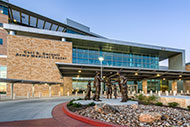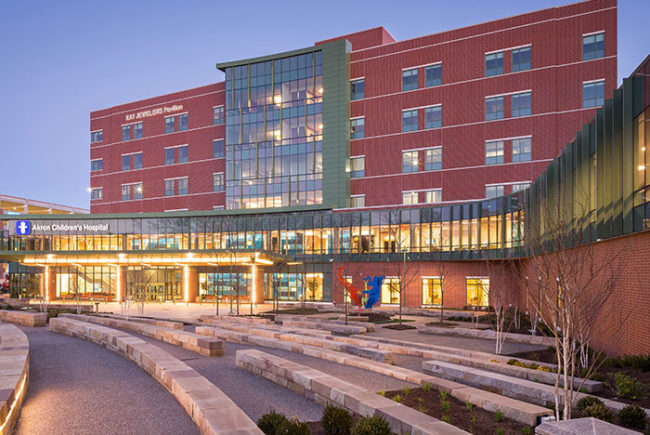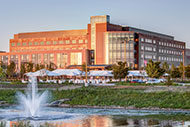
The new University of Pennsylvania hospital is scheduled to open in 2021.
PennFIRST, an integrated project delivery team, is completing the planning and design process for the University of Pennsylvania’s new $1.5 billion hospital that will be “future-proofed” to adapt to medical changes to serve patients for decades to come.
Penn Medicine's new patient pavilion will include about 500 new private patient rooms and 47 operating/ interventional rooms in a 1.5 million-square-foot, 16-story facility. Groundbreaking was held May 3, and completion of the largest capital project in Penn’s history is expected in 2021.
The PennFIRST team is a design and construction collaborative comprising global health care design firm HDR, international architect Foster+Partners, engineering designer BR+A, L.F. Driscoll and Balfour Beatty Construction, and Penn Medicine’s clinical and facilities experts.
The team is creating a facility that will serve as a hub for community health. The pavilion will house inpatient care for the Abramson Cancer Center, heart and vascular medicine and surgery, neurology and neurosurgery, and a new emergency department.
The new facility will allow Penn to deliver “the very best care the 21st century can offer patients, but we’re also future-proofing it to ensure that we can quickly and seamlessly adapt what we do to help our patients in the coming decades,” says J. Larry Jameson, M.D. He is executive vice president of the University of Pennsylvania for the Health System and serves as dean of Penn's Perelman School of Medicine.
The hospital will create a new public square and a focal point for neighboring buildings. It also will serve as an anchor for the health system and create new connections between the hospital and the university campus.
The pavilion will be linked to its neighbors on the Penn campus, including the Hospital of the University of Pennsylvania, the adjacent Ruth & Raymond Perelman Center for Advanced Medicine as well as a local train station via a network of public bridges and walkways.
The PennFIRST team is utilizing the target-value design process to align design with budget as the process progresses, eliminating value engineering after the design is completed. The project schedule is being developed using pull planning and 4-D scheduling to allow for decision-making to occur at the last responsible moment.
Several key subcontractors have been engaged early in the design process to provide input for design, construction, cost and scheduling.
The pavilion’s design has been developed through extensive consultation with Penn Medicine and Hospital of the University of Pennsylvania’s physicians, nurses, engineers, support services, and even patient and family advocates.
The PennFIRST team engaged the groups through design workshops, tours and physical simulations in full-size mock-ups of the inpatient rooms, bed units and interventional suites. Mock-ups helped staff to test how spaces could be designed to support highly efficient operations, and focus groups were created to understand the future use of the pavilion to aid in design.
The hospital is designed for health and well-being, and provides daylight and landscape views to patients and visitors as well as the ability to personalize each room.
Other distinguishing features planned for the hospital include:
- Long-term flexibility of patient room design, which is uniform throughout for future adaptability.
- In-room technologies planned for patient rooms will strengthen communication among patients, families and care teams; provide for educational programming; and enhance physician consultation.
- An eco-friendly construction, design and operations plan underscores Penn's commitment to the environment through its pursuit of LEED certification, innovations like the re-use of water, 100 percent outside air, optimized access to daylight, outdoor green space and ultimately a high-performance building envelope.
Want to see your new health care construction project featured on HFM Daily? Email project information and photos to Senior Editor Jeff Ferenc or tweet to him @JeffFerenc.





